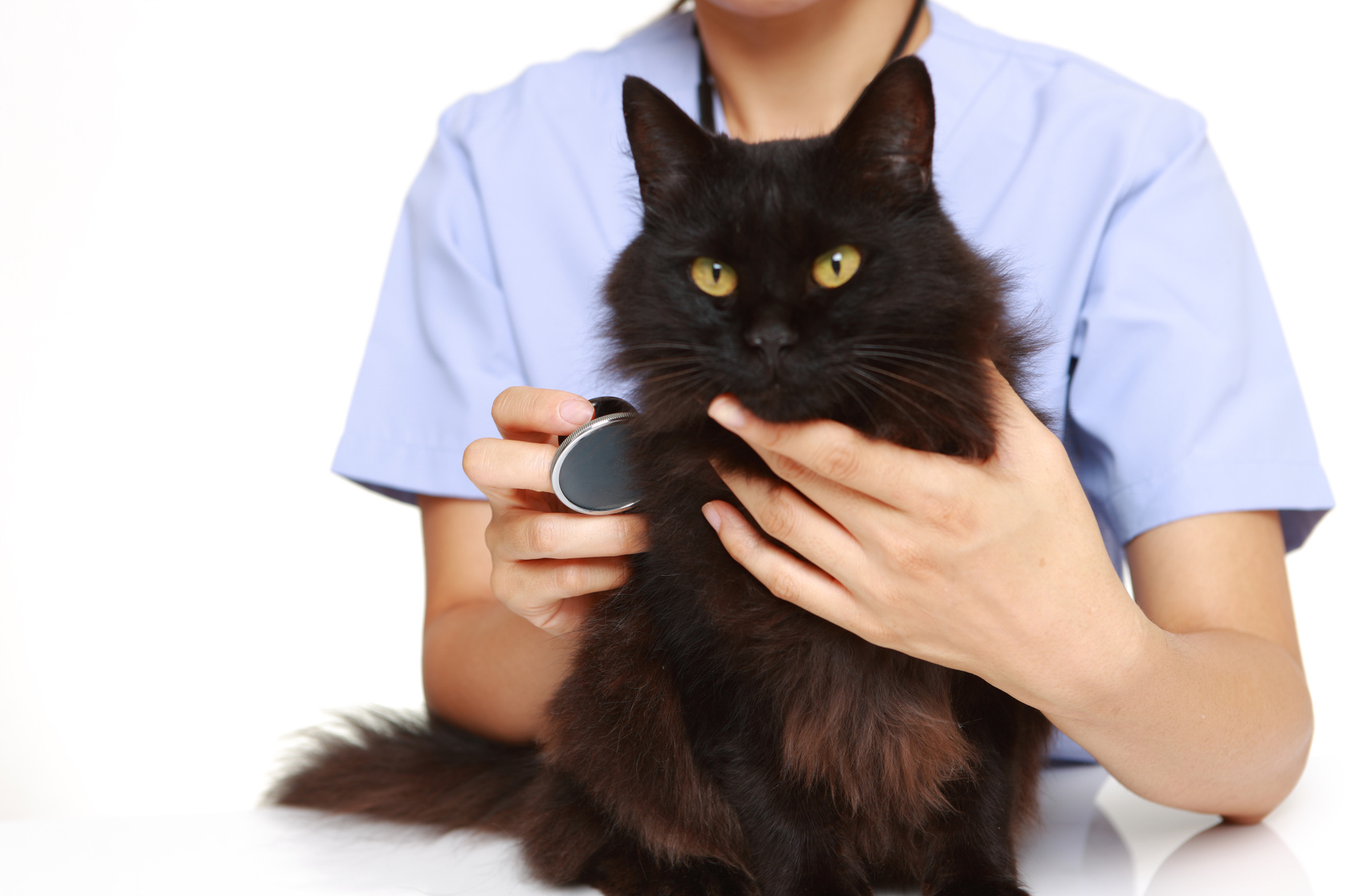Cats, with their nimble agility, are often seen defying gravity. But even these graceful creatures can stumble, leading to an unfortunate bone fracture.
Knowledge about feline bone health and fractures is crucial for any cat owner.
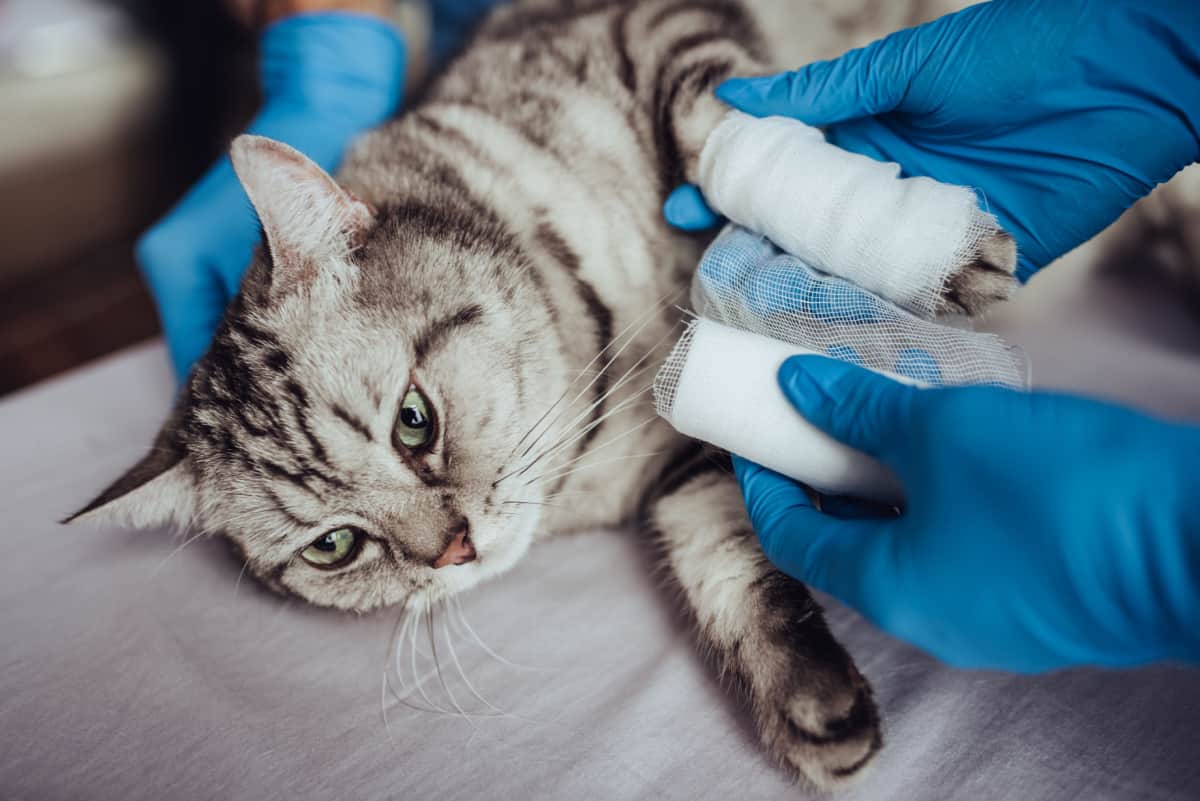
We're going to discuss this important topic, providing you with the necessary information to protect your feline friend.
By understanding the signs and knowing how to respond, you can ensure your cat's swift recovery from any bone fracture incidents.
This is your guide to a safer, healthier life for your whiskered companion.
Unraveling the Feline Framework: A Journey into Cat Bones
At the heart of every cat's acrobatic prowess lies a marvel of nature: a skeleton composed of 244 individual bones.
This intricate framework, bound together by ligaments, gifts our feline friends with a blend of strength and flexibility that's truly extraordinary.
The Feline Flex Factor: A Unique Spinal Story
What sets cats apart from most mammals is the unique design of their skeletal system.
Their bones aren't as tightly knit together, which allows for those awe-inspiring, flexible spine movements.
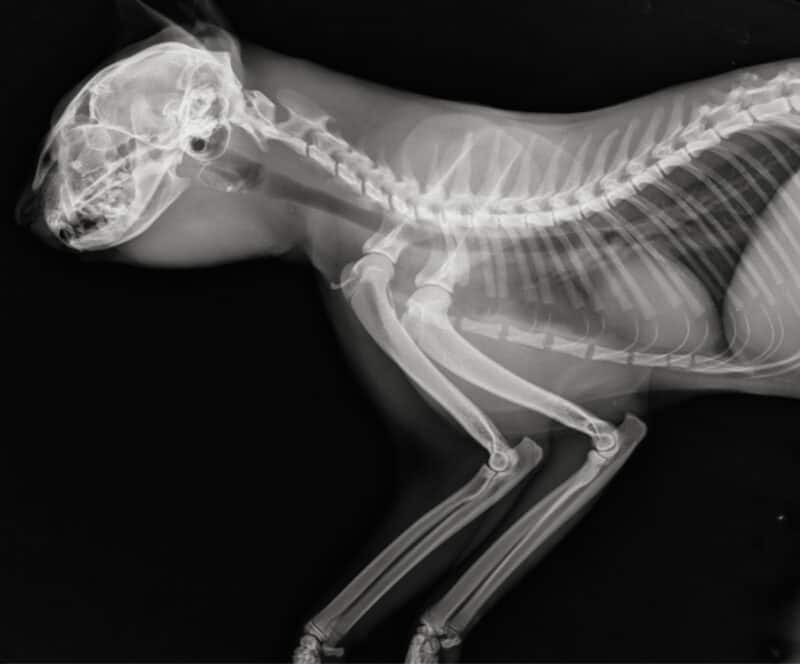
Ever wondered how a cat can flip mid-air and land on its feet within two seconds of being dropped on its back? It's all thanks to this remarkable spinal flexibility.
The Building Blocks of Bones: Cortex and Marrow
Bones are robust structures, featuring a rigid external layer known as the cortex, which houses the bone marrow. This combination makes bones the sturdy support system we see.
The cortex provides the hard exterior that protects the delicate marrow within. This marrow is a vital part of the bone, responsible for producing red and white blood cells.
Together, the cortex and marrow work in harmony, creating a structure that is both strong and life-sustaining.
When Do Cats Fracture Their Bones
Bone fractures in cats can range from a simple crack, known as a greenstick fracture, to a complete break.
Complete breaks are either closed, where the bone doesn't puncture the skin, or open, where the bone protrudes through the skin, causing additional trauma.
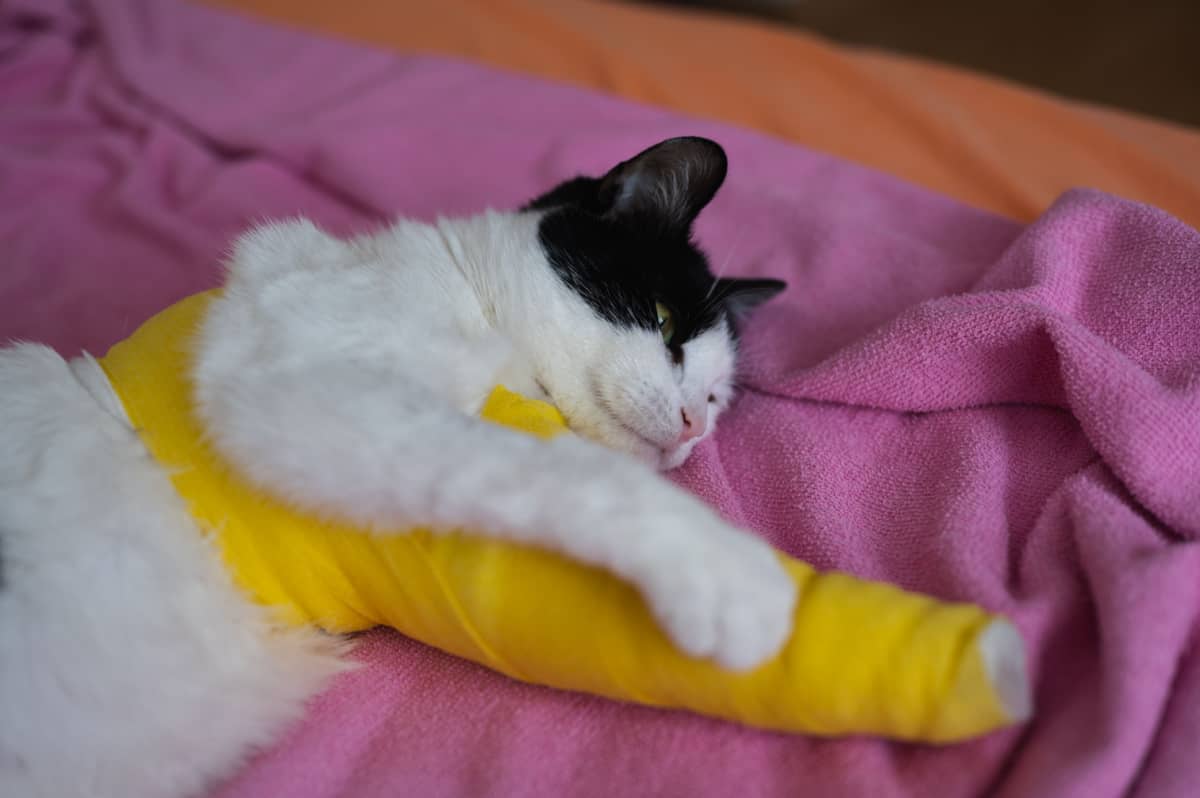
Despite a cat's robust musculoskeletal system, designed for shock absorption, significant shocks can still cause harm.
Such severe injuries, including fractures, can stem from various incidents. Let’s examine the usual reasons:
1. Feline Fractures from Car Accidents
One of the most common causes of fractures in cats is car accidents.
The force of a vehicle hitting a cat can easily result in broken bones, particularly if the cat is hit directly or trapped under a wheel.
2. Bone Fractures from Violent Encounters
Violent encounters with humans, dogs, or wild predators can also lead to fractures.
These encounters can involve kicks, bites, or other forms of physical aggression that can result in severe injuries.
3. High Falls and Cat Fractures
Cats are known for their ability to land on their feet, but falls from great heights can still result in fractures.
Despite their agility, a fall from a significant height can exert enough force to break a cat's bones.
4. Other Musculoskeletal Injuries in Cats
In addition to fractures, cats can also suffer from other types of musculoskeletal injuries. These include strained muscles, tendon injuries, torn ligaments, and sprains.
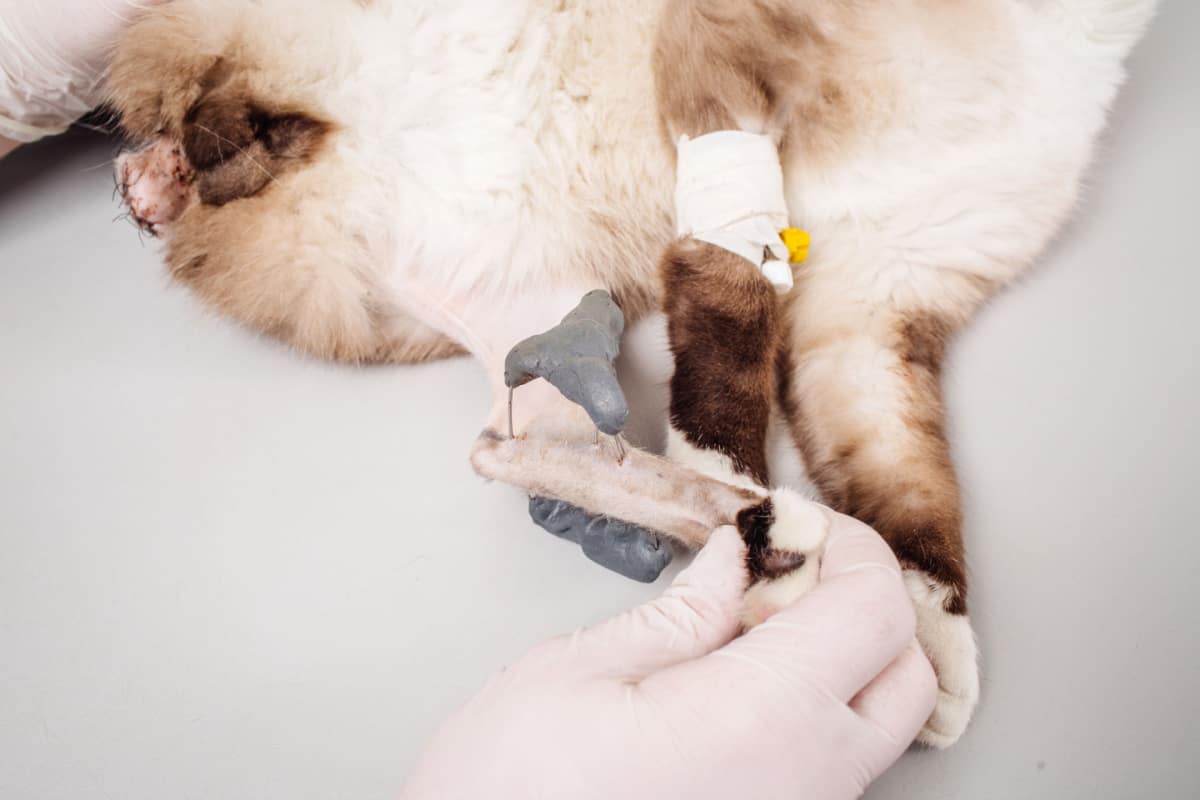
Among these, fractures represent the most severe form of bone injury. Like sprains and dislocated joints, fractures are typically the result of significant physical trauma.
Common Cat Fractures
Understanding these common fractures can help cat owners respond effectively when accidents happen, ensuring the best possible care for their feline friends.
Here's a breakdown of the most common ones, as outlined in the Cornell Book of Cats.
1. Femur Fractures: A Delicate Operation
The femur, or the cat's thigh bone, is a common site for fractures.
These injuries often necessitate complex surgery involving pins and orthopedic wire to ensure proper healing.
2. Vertebrae Fractures: A Serious Threat
Fractures or dislocations of the spine's vertebrae pose a significant risk, as they can damage or even sever the spinal cord.
In severe cases, these injuries may be irreparable, leading to the heartbreaking decision to euthanize the cat.
A common cause of such fractures is a car accident where the cat's tail gets caught under the wheels.
This results in a limp tail and potentially severe neurological damage, including loss of control over urination and defecation.
SIGN UP FOR THECATSITE'S EMAIL UPDATES >
3. Jaw Fractures: A Complex Repair
Falls or car accidents can lead to fractures in the jaw bones, a common type of skull structure injury in cats.
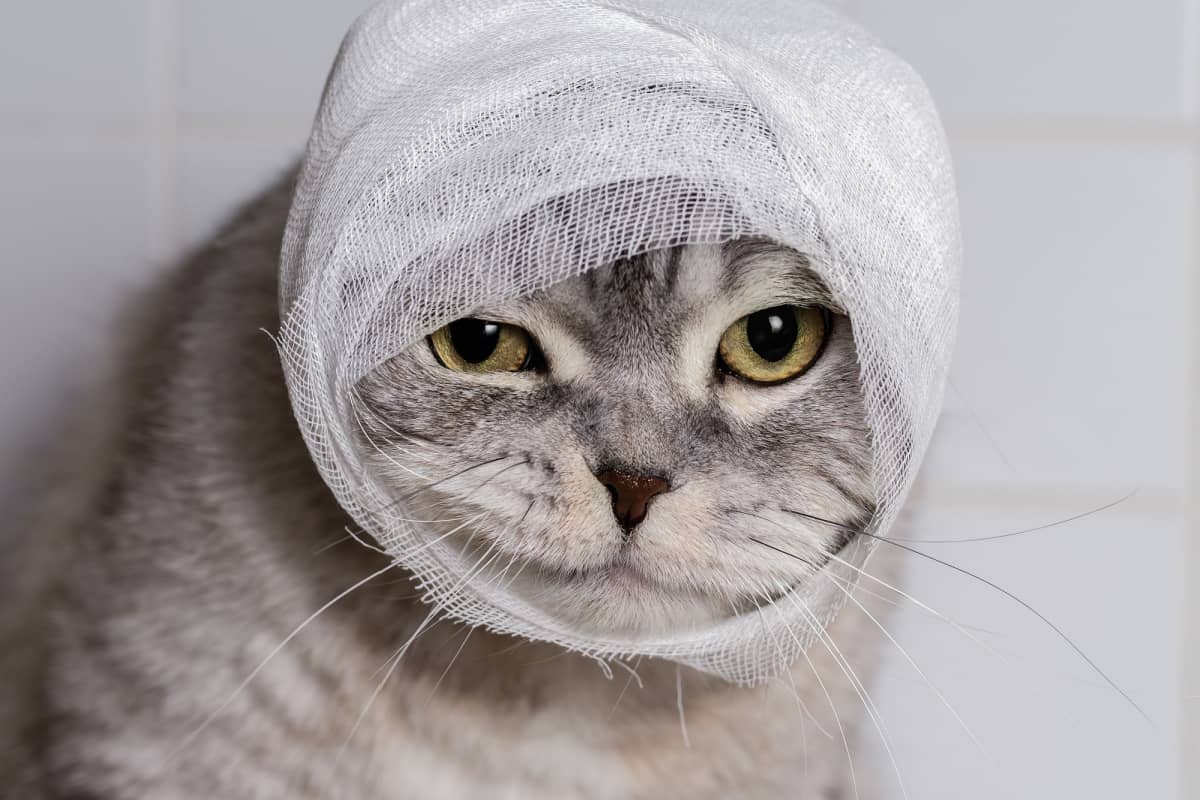
These fractures often require intricate procedures like wiring or plating of the jaws and mouth to minimize permanent damage.
4. Pelvic Fractures: A Healing Dilemma
Pelvic fractures are another common injury in cats. Some of these fractures can heal naturally, as a cat's relatively light body weight allows for self-support during the healing process.
However, certain pelvic fractures may require pinning or plating to ensure proper alignment of the bones as they heal. Neglecting this when necessary could lead to permanent deformities.
What to Do if You Suspect a Fracture
Fractures in cats are typically the aftermath of significant trauma. This trauma may also cause other injuries, potentially internal, and can lead to shock or blood loss.
It's a heart-stopping moment for any cat parent. But knowing exactly what to do in such a situation can make all the difference.
Here are the crucial steps to follow if you suspect your cat has a fracture:
1. Stay Calm
Your cat will likely be scared and in pain. Your calm demeanor can help prevent further stress or injury.
Cats are very sensitive to human emotions, so maintaining a calm and soothing presence can help keep their anxiety levels down.
2. Gentle Handling
Handle your cat carefully to avoid causing more pain or exacerbating the injury.
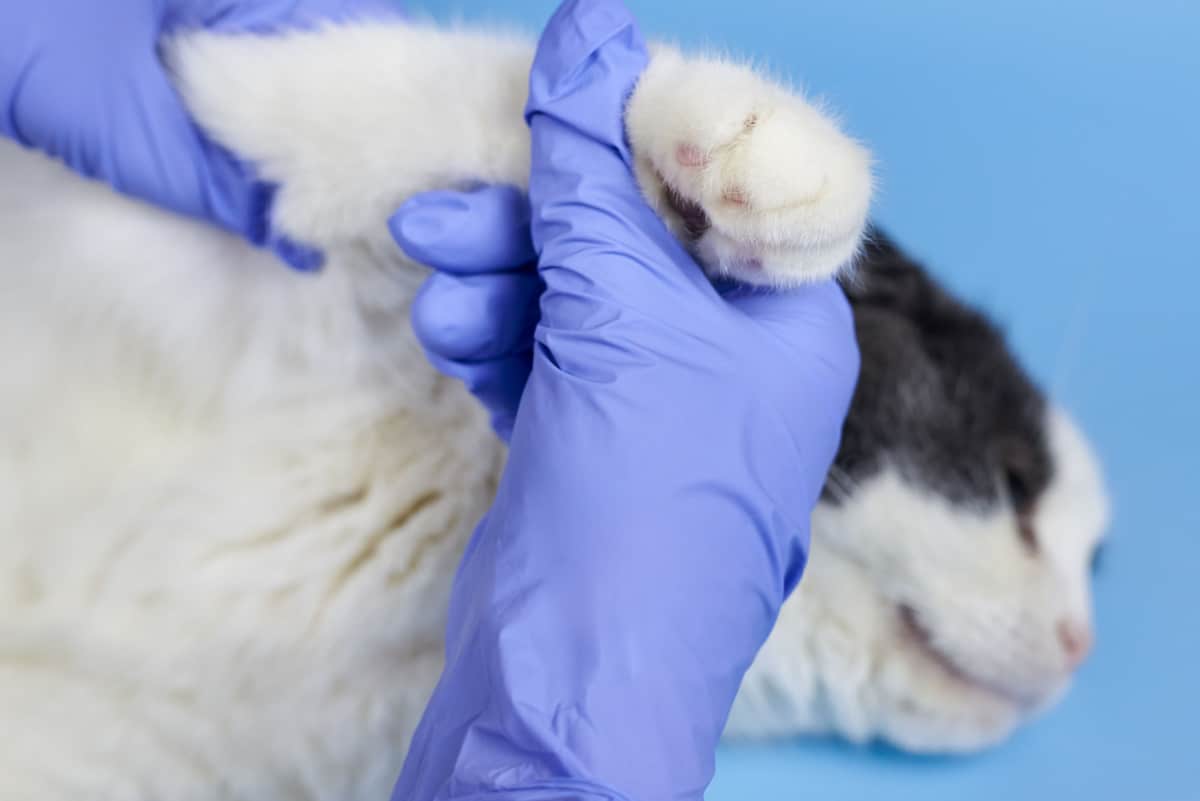
Use slow, deliberate movements and speak softly to your cat. Avoid touching the injured area if possible.
3. Immobilize if Possible
If you can do so safely, try to immobilize the fractured body part using a towel or blanket. This can help prevent further injury during transport.
However, if your cat resists or seems more distressed, don't force it.
4. Prepare for Transport
Place your cat in a carrier or a box with soft padding for transport to the vet. This enclosed space can help keep your cat safe and secure during the journey.
5. Seek Immediate Veterinary Care
Time is of the essence. Get your cat to the vet as quickly as possible. The sooner your cat receives professional care, the better the chances for a full recovery.
6. Share Information
Provide the vet with as much information as you can about what happened and any symptoms you've noticed.
This can help the vet make a more accurate diagnosis and choose the most effective treatment.
Preventing Fractures in Cats
Keeping our feline friends safe and healthy is a top priority for any cat owner. While we've already discussed how to handle a cat fracture, prevention is always better than cure.
So, how can we make their environment safer and reduce the risk of such injuries? Here are some additional tips to help you create a safer world for your whiskered companion:
1. Create a Safe Environment
The best way to prevent fractures is to keep your cat safe from potential hazards. Consider making your cat an indoor pet to avoid risks like busy roads and other outdoor dangers.
2. Prevent Falls
Cats love high places, but a fall can lead to fractures. Secure your apartment windows and discourage your cat from walking on high, precarious ledges.
3. Provide a Balanced Diet
Just like us, cats need a balanced diet for strong bones. A diet deficient in essential nutrients can weaken their bones, increasing fracture risk.
- Calcium and Vitamin D: These nutrients are vital for bone strength. Ensure your cat's diet is rich in both.
- Proteins and Essential Fatty Acids: These contribute to overall bone health. Include sources of these nutrients in your cat's meals.
4. Regular Exercise
Regular play and exercise can help keep your cat's bones and muscles strong.
This can reduce the risk of fractures. Use toys, laser pointers, or even a simple string to engage your cat in active play.
5. Regular Vet Check-ups
Regular veterinary check-ups can help detect any potential health issues early, including those that could increase the risk of fractures.
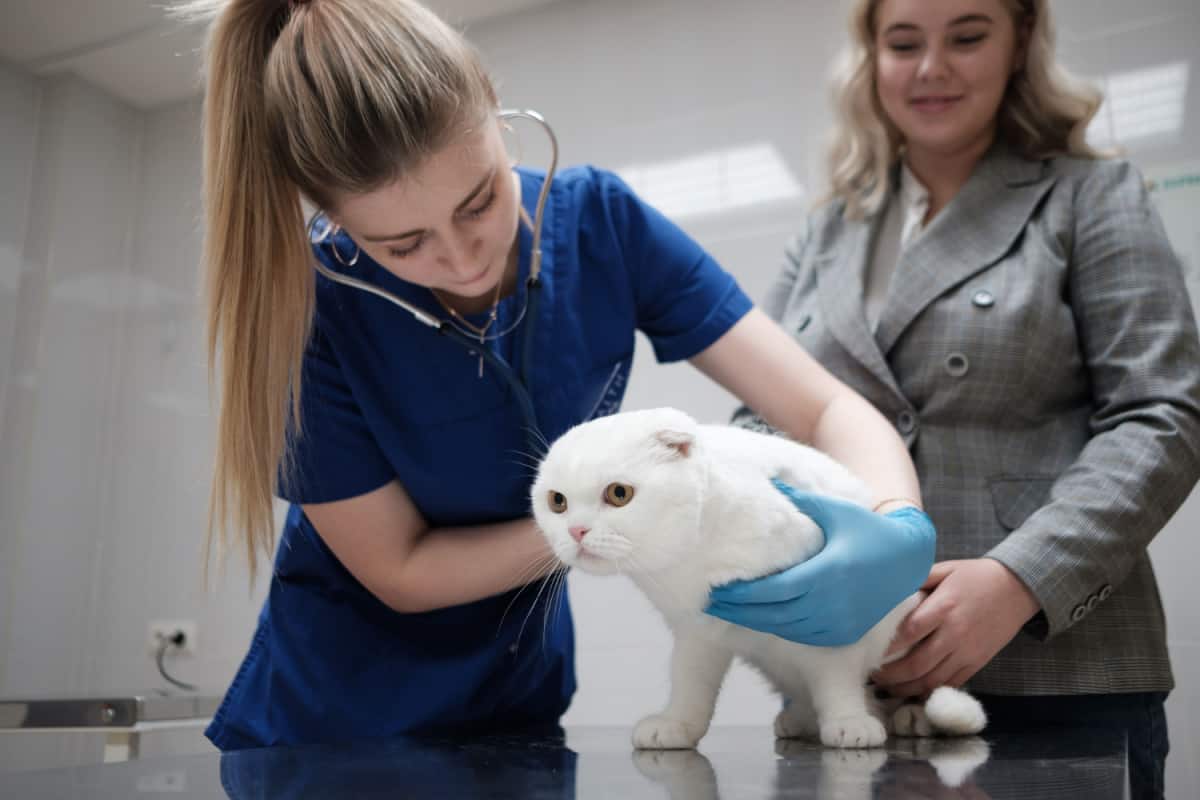
Your vet can also provide personalized advice based on your cat's age, breed, and health status.
6. Avoid Rough Play
While it's fun to watch your cat leap and pounce, avoid encouraging overly rough play. This can lead to accidental injuries and fractures.
7. Maintain a Healthy Weight
Overweight cats are at a higher risk for fractures. Maintain a healthy weight for your cat by balancing good nutrition with regular exercise.
8. Cat-Proof Your Home
Remove any potential hazards in your home that could cause your cat to trip or fall. This includes securing loose wires, removing small objects that could be swallowed, and ensuring all heavy objects are stable and can't be knocked over.
Caring for Your Cat’s Bones: Final Thoughts
Cat owners need to understand their pet's bone structure and fracture risks. Despite their agility, cats can get fractures from accidents. Quick response and prevention are crucial.
In case of a fracture, stay calm, handle the cat gently, and seek immediate veterinary care. Remember, your cat's nine lives are in your hands—let's make each one count.
Still have questions? Or maybe your cat is injured and you need our support? Join the community and post in the cat health forum to let us know about it.
SIGN UP FOR THECATSITE'S EMAIL UPDATES >
Interested in discovering more? Don’t miss our recommended articles below.
First Aid For Cats: Essential Skills Every Cat Owner Should Know
How To Set Healthy Boundaries For Your Cat
Note: We may get commissions for purchases made through links on this page.



